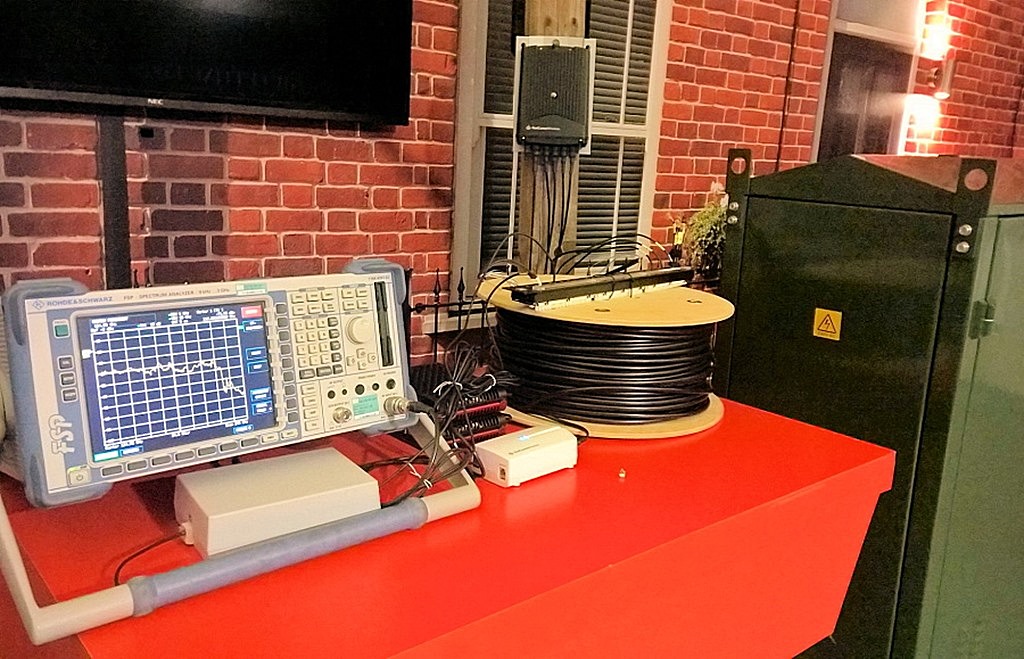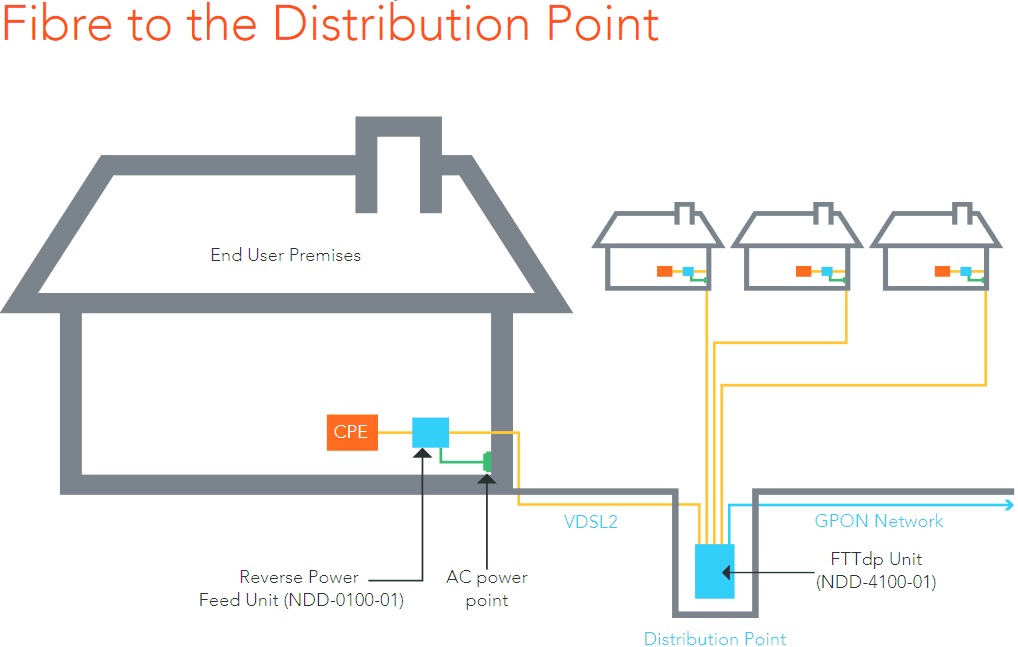BT Openreach Test New 1Gbps Broadband Pole Mounted FTTdp G.fast Kit
Openreach (BT) has confirmed that they’re testing a new Fibre-to-the-distribution-point (FTTdp) style of G.fast broadband technology that mounts hardware from NetComm Wireless on top of telegraph poles, which shows that the operator hasn’t given up on FTTdp.
Some readers will readily recall that many of Openreach’s earliest trials were deployed using smaller G.fast nodes (distribution points), which were fixed on top of telegraph poles or under manholes and fed by a fibre optic cable. A small box would often then be built nearby in order to supply this kit with power.
The advantage of an FTTdp model like the one described above is that you could build the G.fast kit much closer to homes (e.g. within 100 metres), which would in theory make it possible to deliver Gigabit speeds to end users (results from an early trial). The disadvantage was that small G.fast dp units could only handle a few ports and this sort of deployment is generally more expensive.
Advertisement
However, improvements in the technology have since made it possible for Openreach to run G.fast over longer runs of copper cable (up to about 500 metres but you need to be under 350m for speeds of 300Mbps), which in turn has made it feasible for the operator to deploy the service by building an “extension pod” on to the side of existing PCP street cabinets (see new pod pictures). This is cheaper and the pods can handle up to 48 ports (rising to 96 this summer).
We expect all or most of the operator’s initial roll-out of G.fast (targeted to cover 10 million UK premises by 2020) to adopt the PCP cabinet + pod approach, while the previous FTTdp method has taken a back-seat. However this week Openreach revealed that they were testing a new FTTdp based approach using G.fast dp kit from NetComm Wireless.

The hardware in these pictures is experimental and remains very similar to the VDSL2 (FTTC) based NDD-4100 that is depicted on the NetComm Wireless website, albeit using G.fast. The NDD-4100 was only able to deal with 4 end-user ports + 1 for the GPON (fibre optic) supply and the G.fast dp above has the same limit. Several dps would thus be needed to serve a busy street.
Advertisement
The new G.fast kit is also reverse powered (i.e. that small cream coloured box next to the cable reel is the Reverse Power Feed Unit), which means that Openreach could significantly cut their costs and thus make it easier / quicker to deploy the service by asking end-users to power the local dp (we’ve talked about this before).
Naturally reverse power may throw up some questions about regulation, safety, backup power and end-users electricity costs. On the other hand it would be a very low power service (only a small impact on bills – depending on how many lines are used) and we suspect that many people in rural areas would gladly sacrifice a bit of their electricity if it meant being able to get ultrafast broadband.

Openreach also informed ISPreview.co.uk that the new NetComm Wireless G.fast kit is able to harness the full spectrum frequency available to the technology (i.e. it can use up to 212MHz instead of the 106MHz of initial deployments). As such the operator claims to have been testing it with downstream speeds of up to 1Gbps and uploads of up to 300Mbps, which is a fair bit faster than their earliest FTTdp + G.fast proof of concept trials.
Advertisement
Apparently the above speeds are being achieved at a distance of around 40 metres (copper run from the G.fast dp and into your home). By comparison the original G.fast Proof of Concept trials, which occurred a few years ago, were able to deliver an aggregate (download + upload) speed of around 600-700Mbps at the same distance.
Clearly Openreach are still developing the FTTdp + G.fast option for future deployments but for now we still don’t know how much of a role it might play, particularly with the new aspiration to roll-out much more FTTP than currently planned (here).
Mark is a professional technology writer, IT consultant and computer engineer from Dorset (England), he also founded ISPreview in 1999 and enjoys analysing the latest telecoms and broadband developments. Find me on X (Twitter), Mastodon, Facebook, BlueSky, Threads.net and Linkedin.
« Airband Wins Superfast Broadband Deal for 13,000 Premises in Devon UK
















































Comments are closed